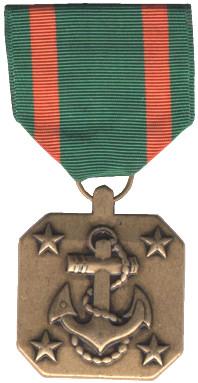
Shore duty - Nuclear Field "A" school instructor
Shore duty is actually not that spectacular. It really is a time to rest and recuperate from a long sea tour. When I arrived in Orlando, I was greeted by the Command Master Chief telling me that if I had nothing to do, that I should do nothing some place else other than the school! This did not mean I did not have to come to work or avoid work, it meant that liberty and time off policies were fairly liberal at shore duty. I had a great time once I qualified to be an instructor.
Another surprise greeted me only a few weeks after reporting to the school. I received an award for my performance on board USS Lafayette. I had received several letters of commendation but this time I received a Navy Achievement Medal.

A medal for a job well done!
The write up for the award is full of flowery stuff but basically it was for doing a good job while I was aboard the ship. I appreciated the thought by my Senior Chief, who wrote up the award and put me in for it.
I qualified to teach at Nuclear Power School's pre-school math class. At the time, prior to starting Nuclear Power School, students were given a three to six week refresher course in math (mostly algebra and basic trigonometry) and basic physics. Some of the students had little experience with the materials or had not performed such studies since high school or college. I had to attend the three week version when I was a student. Students with lower than average qualifying scores had to attend the six week course. I taught one six week course of math to gain experience and then was transferred to the group that was developing the Nuclear Field "A" school curriculum. I was responsible for developing the radio communications portion of the electronics course. Luckily, I had some help from technical representatives who outlined the course for us. I then went through all the communications materials to fill in the gaps. I also spent time typing this into a computer (this was 1985!) and trying to make the material flow together. By the time I had a chief petty officer working with me, the course was essentially completed, which made the Chief and others very happy. We were able to then work on expanding on what I had written. This took the better part of a year to complete.
About the time the school formally started it's first class, I decided it was time to re-enlist again. Here is a photograph of that reenlistment. I was still a first class petty officer (E-6). This was about to change.
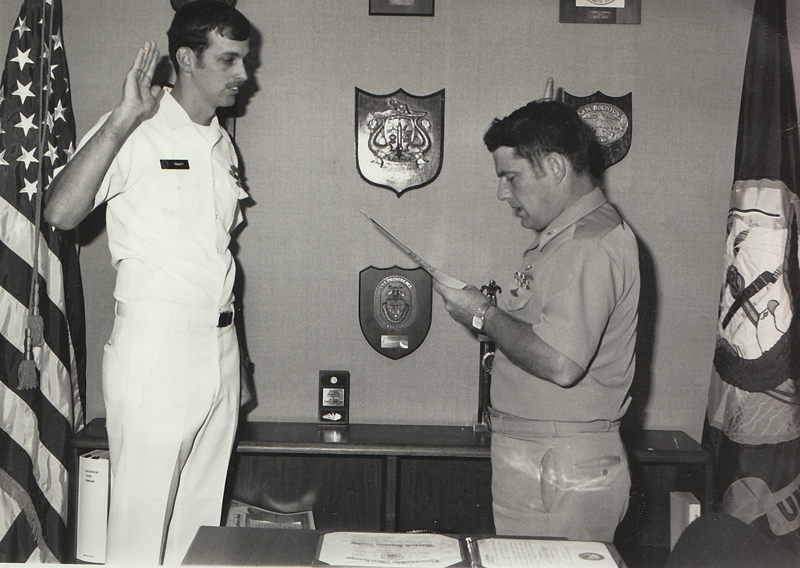
In the summer of 1986, I discovered that I was selected for advancement to Chief Petty Officer (CPO). This is not only an advancement in pay grade to E-7, it is also a big deal in the US Navy. Normally, advancement to the Petty officer pay grades consist of taking an exam and then, by combining the test scores and your performance average, you have a final multiple score. The Navy determines how many advancements they need in your particular rating and then sets the multiple at which they advance all the candidates. To get advanced to Chief Petty Officer, you have to pass the exam and then your service record is sent to Washington, where a selection board goes through all the candidates records to determine which is most deserving for advancement. Lucky for me the Navy needed a large number of Nuclear CPOs in the Electronics rating that year and, as a result, I managed to make it on my first try.
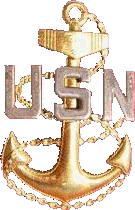
Suddenly, I was now being called "The Chief"
The rest of the tour was uneventful as I taught Electronics courses to various students. As each class graduated, I posed with them for photographs. Usually, the students gave us a copy when completed. Here are two class photos.
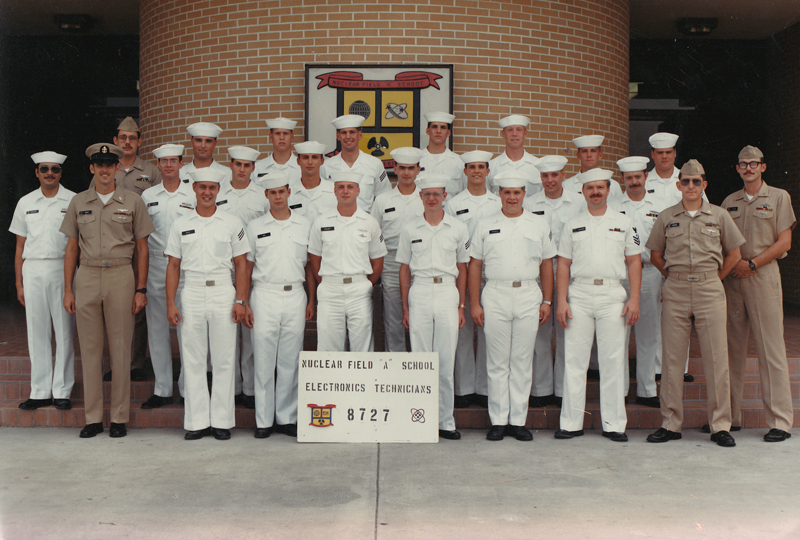
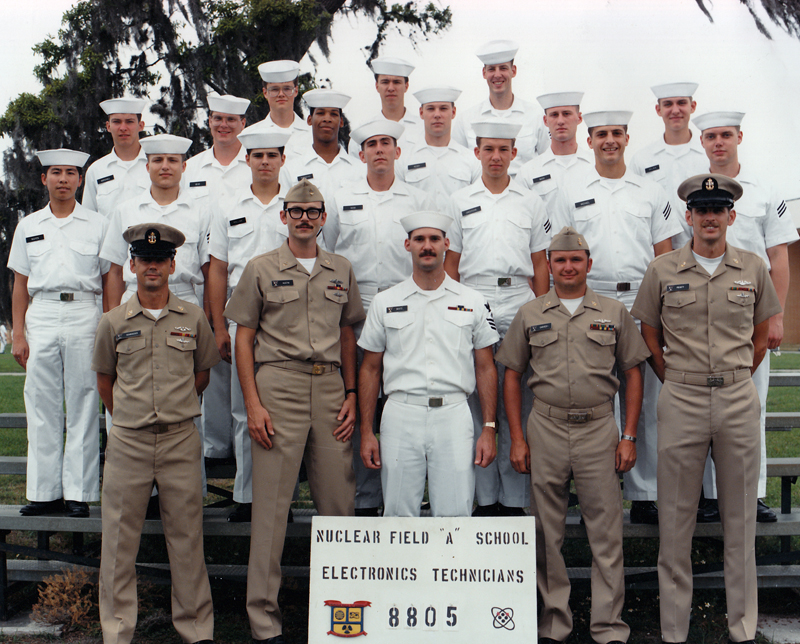
Several Nuclear Field "A" school class photographs.
By 1988, I was ready to return to sea. This time, I wasn't going to be one of the troops. I was going to be the Chief. That concerned me somewhat. I wasn't sure I was ready to do the job but I was going to try. My desire was to be assigned to a Fast Attack submarine on the west coast. I was hoping to go to Hawaii. However, my detailer told me there were no openings there and I had a choice of Groton or Norfolk. I chose Groton and was designated to relieve the Reactor Controls Leading Petty Officer aboard the USS Pargo, SSN 650. I was excited because it was a submarine with the engineering plant similar to Lafayette's and it would not take me long to learn the ship. I talked to the guy I was relieving and plans were made for my arrival in mid-May of 1989. It was a nice plan but it changed with little warning.
While I was on leave in April of 1989, I received a phone call from Washington. I was told there was a need for a Reactor Controls division chief elsewhere in Groton. My new orders were to report to the USS Providence SSN 719 as fast as possible. A quick call to Providence revealed to me the ship was going out on deployment and their Chief could not go. In less than a week, I had changed all my move plans and was on my way north driving from Orlando to Groton. I was about to see if I could become "The Chief".